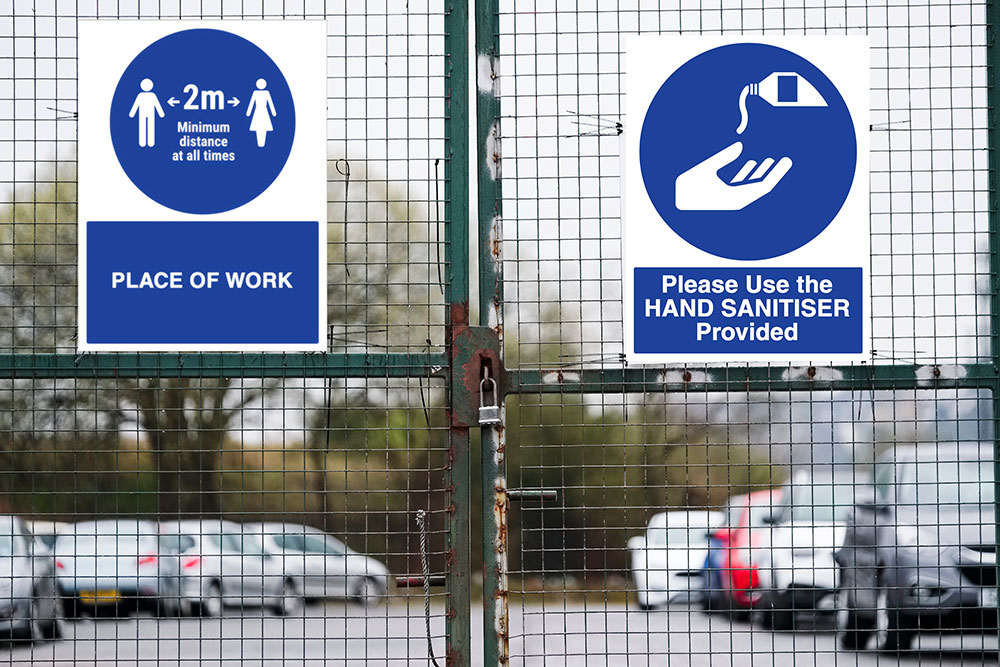Operational Excellence in challenging times: Eclipse adapts to COVID Pandemic
26 May 2020
The COVID-19 (C-19) Pandemic has changed the way in which business and social interaction occurs and is likely to be something that continues to affect behaviour even post lockdown.
NiSoft have not only continued our services, we have looked at how our clients use Eclipse and how new C-19 regulations and restrictions are requiring us to work differently. The Eclipse Suite of software has been reviewed at a high level to identify key processes where social distancing, avoidance of cross-contamination, remote working and information sharing can be addressed to mitigate C-19 risk.
Most of NiSoft’s customers are considered “essential’ by governmental determination and must continue operating. NiSoft is committed to helping our customers maintain safe and operationally productive work environments while adhering to new social distancing rules. To that end, we are suggesting measures that can be implemented in our systems to accomplish this with new regulations and work processes. We are sharing some of these measures in a series of information sheets to show how elements of the Eclipse Suite can be used differently or adapted to suit changing processes and requirements.

Social Distancing
Many companies are already using web-meeting and conferencing software to conduct meetings even when at the same worksite, allowing individuals to stay distanced and in their own personal area while maintaining communication and sharing information. This type of software can be used along with Eclipse but there are some things that should be considered.
- Security Permissions: One of the easiest approaches to streamlining operational process is to look at a temporary re-assignment of authority levels and personnel involved, where safe to do so. This will drive down the number of people authorizing documents and limit interaction.
- Printing: The use of local printers to minimise the number of personnel in Permit Offices or Control rooms. A second option where paper copies are a necessity is for multiple copies of the safety documents to be printed with the correct procedures in place so no paper-sharing is required (watermark controls could aid in this process).
- Location of LOTO Boxes: For some LOTO users, moving the Lockout Boxes (LOBS) to areas with more open space or assign LOBS to different areas around the plant can reduce groups and close personal contact. Eclipse can be updated to track the location and numbering systems of the LOBs that are assigned to different areas as required.
- On-Site Permit Issuing: Accepting, issuing and closing out permits can be performed in the field limiting face-to-face interactions. This can be managed using the following approaches:
- Kiosks – equipped with disinfectant sprays and cleaning materials to limit cross contamination.
- Mobility – paperless systems and issuing permits to personal mobile devices.
- Electronic Approvals: Signing on/off safety documents electronically will help keep Permit Office congestion to a minimum. Although many clients already have Electronic Approvals, this is normally only up to the Issue stage with paper documents being printed and having an ink signature for Acceptance.
- ePermit: Permits can be issued to PDF with a digital approval supported by an e-signature if required. The PDF can then be emailed to an individual and displayed on a personal mobile device. The acceptance of the permit and close out could be done via verbal acceptance over phone.
Cross Contamination

There are many occasions at site where paper documents, tags or devices are passed between working parties, this can be reduced or eliminated through use of personal mobile devices. Not all companies are in a position to implement paperless systems or even allow all contractors and employees to carry personal mobile devices onsite. Mobility and Paperless systems will be looked at in more detail in a separate paper but this section looks at some of the other options that are available.
- Contactless Approval: Use of ID cards with Barcodes, Badge Readers and RFID tags for acknowledgement or approval does not require handling of common materials. Having scanners or readers at the permit office would eliminate the need for permit receivers or Permit authorisers to physically touch surfaces. The use of barcodes on Permits can also facilitate contactless searching when surrendering permits or closing out at a Permit Office.
- Paperless Process: The ultimate way to limit cross-contamination and adhere to social distancing is using personal mobile devices and adapting processes and technology towards a paperless environment. Although a more involved, long term approach, it is a very efficient method to perform and manage the permit process. Due to the power of mobile devices today, it also means that users can manage Logbooks, Risk Assessments, LOTO and much more on one device.
Prompts and confirmations

The use of simple popup messages and prompts requiring user acknowledgement and recording an audit trail is a quick, easy and effective way to add value to the system in support of any new rules and regulations. Some examples of this may include:
- Wear gloves when hanging tags and handling paper permits
- Wash your hands, wear a mask, Stay 2 metres away from people, cough into your elbow
- Stay behind yellow site guide markers
Or more direct questions such as:
- “Is this work essential?”,
- “Please acknowledge acceptance and application of site rules, which include…”,
- “Do you currently have any of the following symptoms: Cough, Fever…”.
Such questions can affect the safety document process or even flag up alerts to stop the person from working until checked. A full audit trail of questions and answers is also captured. Due to the configurable nature of new Eclipse Suite of systems this is something that can be easily introduced to most process steps.
Notifications are also possible via automated emails in the Eclipse Suite. If there are too many permits or too many working parties in a specific area (based on issued or approved safety documents in the system for any day/time) the system can flag up a warning and send automated emails.
Managing Remote Workers
Many companies have already provided secure logins to their employees to allow access to the Eclipse application from outside the site.
Using tools such as Citrix, RDP or VPN access can also facilitate a remote connection to eclipse without the need for employees or contractors to have NiSoft software on their local machine or to be at the worksite for the planning phase.
This allows users to have access to review work request while contractors can complete risk assessments and method statements to submit remotely into eclipse. If the work is rejected email notification can be sent thereby reducing wait time and maintaining social distancing as well as preventing unnecessary trips to site.
Share your experiences
NiSoft have documented some of the best tips and tricks for e2 and e3, these articles will be published in the news section on this website over the coming weeks. We trust these initial suggestions are of value to you and our team would be more than happy to discuss any aspect in more detail.
There are undoubtedly many other innovative ways and methods of using and adapting NiSoft’s e2 and e3 systems to help you and your colleagues manage effectively throughout the time the world is dealing with Covid-19. If you have any ideas or suggestions that you can share with your fellow site professions, let us know and we will document these and share them through our website or social media.
Let’s all share our knowledge and work together to get through this.








